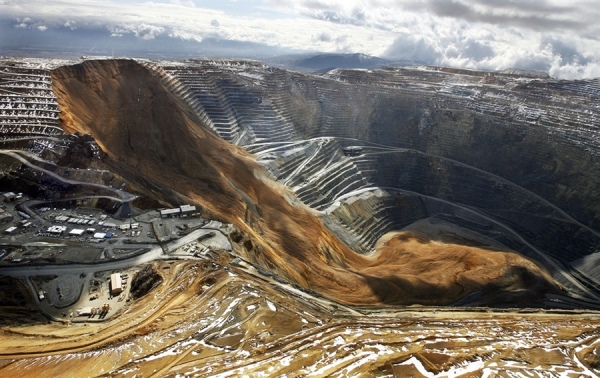When talking about feasibility studies and more particularly their failures, it is important to define what exactly a failure is. It is important for a number of reason but a particular one that comes to mind is that not knowing about, or not admitting, a problem or failure almost certainly leads to cost escalation later down the road. So how do you know when your feasibility study has failed? I am aware of the fact that in some circumstances it might be difficult to distinguish between feasibility study failure and project implementation failure but often the implementation and execution has its roots in feasibility problems.

The massive landslide at Kennecott Utah Copper’s Bingham Canyon Mine occurred on April 11, 2013. Image courtesy of KSL
Let’s start with what a feasibility study failure is not. A feasibility study is not a failure when a study finds a project infeasible. This may seem easy enough but a toxic mixture of corporate pressure, intrinsic consultant conflict of interest and the resultant confirmation bias often results in over-optimism when instead there should be realism (maybe even pessimism). A execution failure as opposed to a study failure can be distinguished on the basis that there is no change in the geo-technical aspects encountered during development and that market conditions have remained within the parameters of the cost sensitivity study.
Issues related to feasibility failure can often go undetected for a long time, in some cases due to very high development and production rates (albeit unsustainable) at the onset of a project, in other cases due to ineffective, all inclusive technical monitoring and/or lack of resource. These are some of the indications that the feasibility study has failed:
- Mined ore grade is lower than expected
- Processing plant is under performing
- Development cannot keep up with planned schedule
- These indicators usually lead to capital costs overruns
- Higher than planned operating costs
- Lower sales revenues
These characteristics are not always an indication of failure but should be flickering orange lights to the project team. As geologists we need to be acutely aware of the fact that these components of failure are often either directly or indirectly related to the resource model and estimation. A 2003 study (Managing technical risk for mine feasibility studies; McCarthy) allocated the following frequency with which different technical factors resulted in feasibility study failure:
- Geology, resource and reserve estimation: 17%
- Geo-technical analysis: 9%
- Metallurgical test work, sampling, [mineralogy?]: 15%
- Geo-hydrology: 4%
- Mine design and scheduling: 32%
- Mining equipment selection: 4%
- Process plant design: 12%
- Cost estimation: 7%
Direct geology link? Almost half. So, good geology work gives a truly feasible project a 50% better chance of success, bad geology turns a perfectly sound project into 50/50 chance.

Pingback: Breaking down the feasibility process: One simple graph that explains pre-feasibility | The Economic Geologist
Pingback: Breaking down the feasibility process: Should we wait until the final feasibility study to consider business factors? | The Economic Geologist